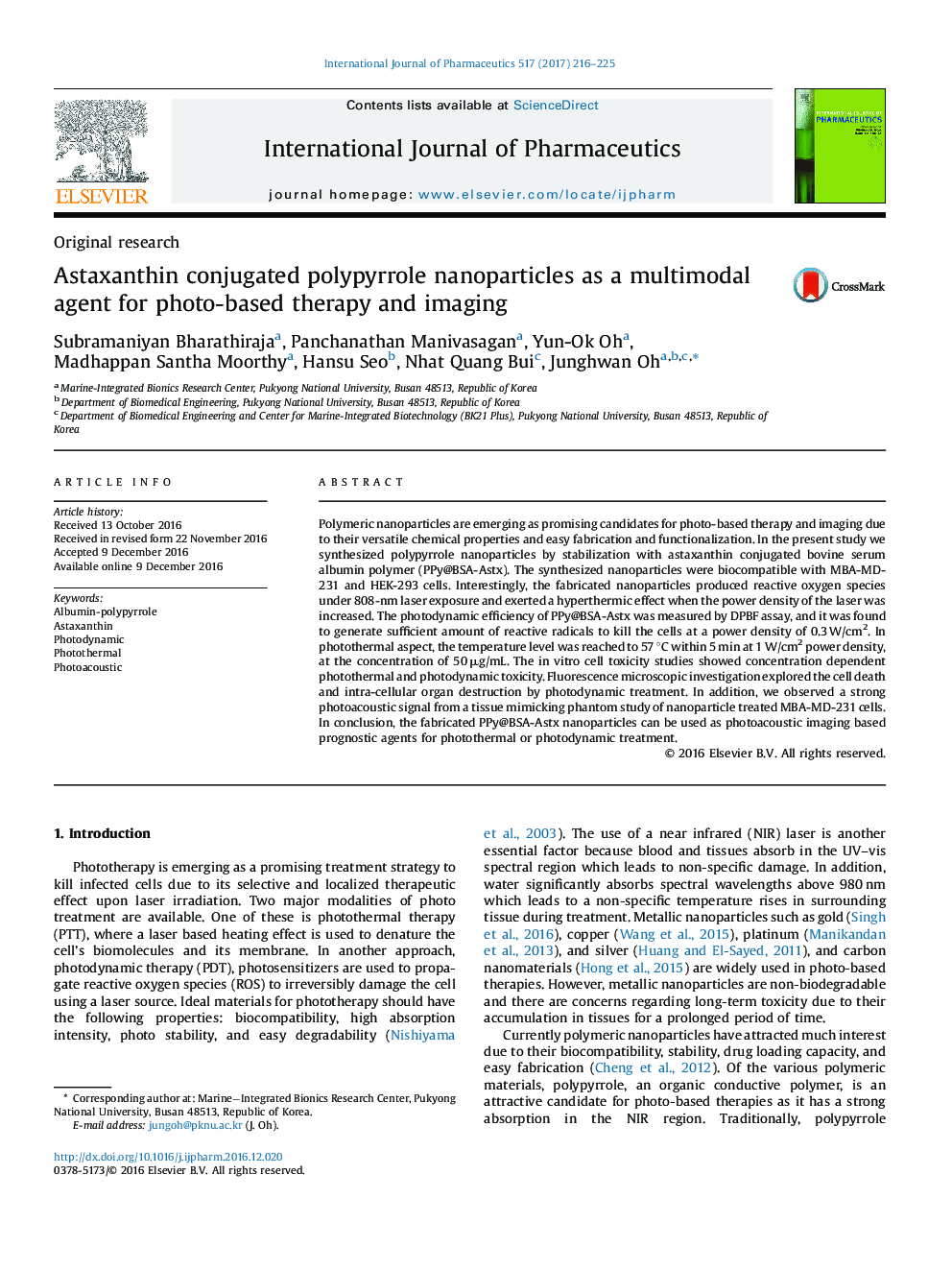| کد مقاله | کد نشریه | سال انتشار | مقاله انگلیسی | نسخه تمام متن |
|---|---|---|---|---|
| 5550745 | 1557300 | 2017 | 10 صفحه PDF | دانلود رایگان |

Polymeric nanoparticles are emerging as promising candidates for photo-based therapy and imaging due to their versatile chemical properties and easy fabrication and functionalization. In the present study we synthesized polypyrrole nanoparticles by stabilization with astaxanthin conjugated bovine serum albumin polymer (PPy@BSA-Astx). The synthesized nanoparticles were biocompatible with MBA-MD-231 and HEK-293 cells. Interestingly, the fabricated nanoparticles produced reactive oxygen species under 808-nm laser exposure and exerted a hyperthermic effect when the power density of the laser was increased. The photodynamic efficiency of PPy@BSA-Astx was measured by DPBF assay, and it was found to generate sufficient amount of reactive radicals to kill the cells at a power density of 0.3 W/cm2. In photothermal aspect, the temperature level was reached to 57 °C within 5 min at 1 W/cm2 power density, at the concentration of 50 μg/mL. The in vitro cell toxicity studies showed concentration dependent photothermal and photodynamic toxicity. Fluorescence microscopic investigation explored the cell death and intra-cellular organ destruction by photodynamic treatment. In addition, we observed a strong photoacoustic signal from a tissue mimicking phantom study of nanoparticle treated MBA-MD-231 cells. In conclusion, the fabricated PPy@BSA-Astx nanoparticles can be used as photoacoustic imaging based prognostic agents for photothermal or photodynamic treatment.
185
Journal: International Journal of Pharmaceutics - Volume 517, Issues 1â2, 30 January 2017, Pages 216-225